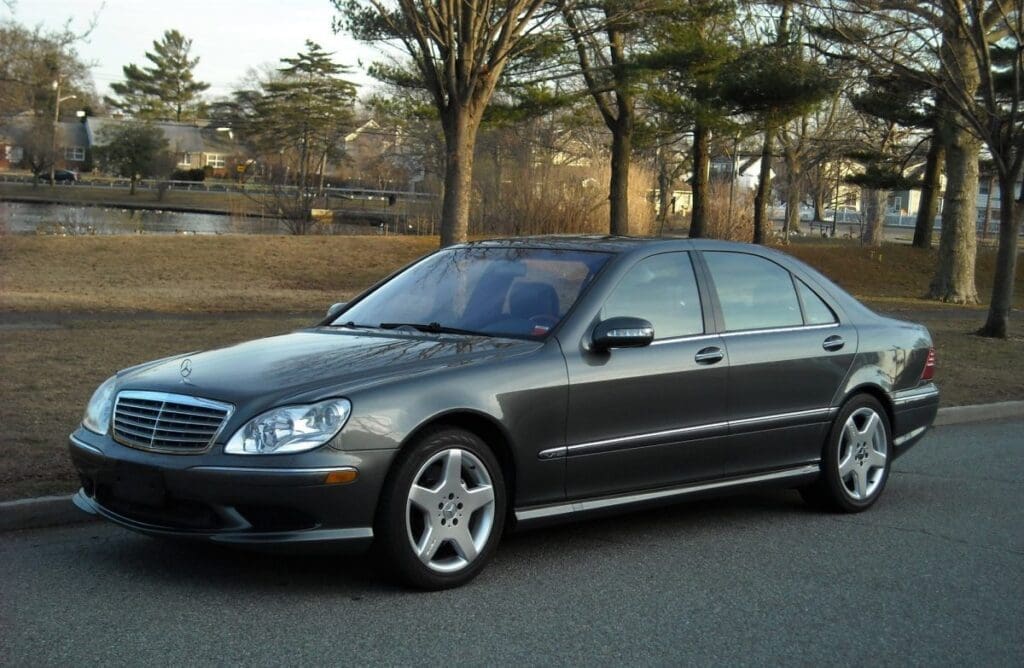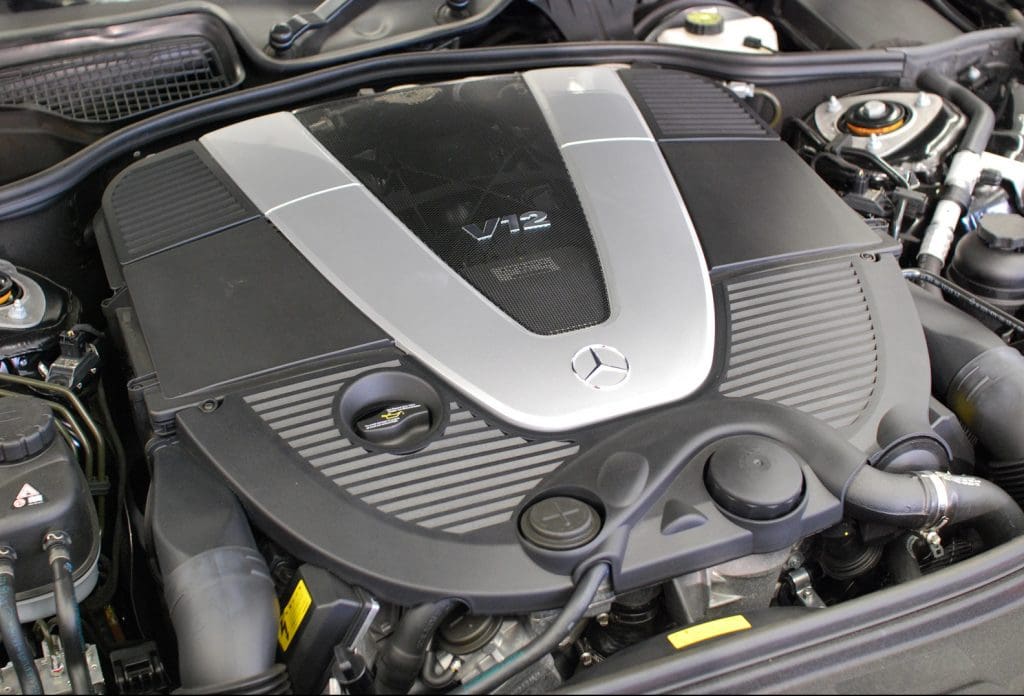Used Cars to Avoid: 2001-2002 Mercedes-Benz S600 V12

Contents
The Sonderklasse — German for “special class,” or “S-Class” for short — is the ultimate Mercedes-Benz sedan. Each iteration, dating back to the 1950s, has been a showcase for the automaker’s best design, features, and engineering. And short of an uber-elite Maybach model, a V12-equipped Mercedes-Benz S600 has long been the finest S-Class money could buy.
But it wasn’t always the most reliable. In fact, one particular version of the S600, sold during the 2001 and 2002 model years (in the US), has proved to be one of the most problematic Mercedes-Benzes of the modern era.

The W140-Era S600
The first S600 debuted almost 30 years ago for the 1992 model year. Actually, back then it was called the 600SEL — where “600” represented the all-new 6.0-liter V12 under the hood, “S” stood for “Sonderklasse,” “E” stood for “einspritz” (German for “fuel injection), and “L” stood for “lang” (German for “long,” as in the long-wheelbase version).
About that engine, it was nothing short of a masterpiece. Known internally as the M120, Mercedes’ first passenger-car V12 was a naturally-aspirated, 48-valve chunk of aluminum and steel cranking out around 400 horsepower and over 420 lb-ft of torque. It was capable of hauling the two-ton 600SEL to 60 miles per hour in a mere six seconds. In a Top Gear video review at the time, iconoclastic reviewer Jeremy Clarkson called the M120, simply, “magnificent.”
The M120 V12 also went on to racing fame. A modified version powered the Mercedes-Benz CLK GTR race car to six wins during the 1997 FIA GT Championship season. Another version has been fitted to the renowned Pagani Zonda supercar since the late 1990s — and actually still is to this day.
In 1994, Mercedes switched its model naming convention, and the 600SEL became the S600. The top-tier S-Class kept the M120 under the hood, though, and did so all the way through the final year of the W140 generation’s production run in 1999. The mill lasted even longer in MB’s V12 roadster, the R129-generation SL600, which was phased out after 2002.
And that’s when the trouble began.

The W220-Era S600
Between the M120’s first appearance and the debut of the next-generation S600 (known as the W220), Mercedes struggled financially. They’d reportedly sunk over a billion dollars into the development of the W140 and yet found themselves losing ground through much of the 1990s to upstart Lexus, whose revolutionary LS400 model offered S-Class-like features and performance for tens of thousands less Deutsche Marks. A merger with Chrysler, creating the Daimler Chrysler corporation, helped Mercedes to right the ship — as did adopting a more cost-conscious approach to building cars.
It was during this cost-conscious era that the W220-generation S-Class appeared. In many ways a response to the excesses of the prior S-Class generation, the W220 was smaller, lighter, and more efficient than the W140 it replaced. It was also far more technologically advanced, a reaction to ongoing pressure from developments being made by Lexus. (For more about the differences between the W140 and W220 S-Class generations, see our comparison article.)
Mercedes kept the S600 in the lineup, though. And they kept a V12 under the hood. But in the W220-generation S600, which first appeared for 2001, it was a lesser engine. With a smaller displacement (now 5.8 liters) and one fewer valve per cylinder (now 36 total) than the M120 it replaced, the M137 V12 (as it was known internally) produced 10% less power, dropping output to 362 hp and 391 ft-lbs of twist. That was enough to match the performance of earlier S600s, though, thanks to the W220’s improvements in weight and aerodynamics.
Reviewers at the time still raved about the S600. In its road test of the day, Car and Driver said of the new Benz flagship, “There is no better self-propelled, land-bound way to get somewhere quickly while simultaneously keeping tabs on a corporate empire.”
Unfortunately, though, any captains of industry who happened to buy one were in for a nasty surprise — assuming they kept the car for very long. That’s because the M137 V12 proved to be one of the least robust Mercedes engines ever made.

Problems with the M137 V12
A quick Google search on “M137 problems” returns a laundry list of issues. But the worst of these is the fact that the engine (pictured above) is literally not strong enough to endure the forces it generates. As a result, its cylinder walls are prone to deformation, leading to an out-of-round shape that allows oil to pass into the combustion chamber. Once that happens, there’s really no fix other than to replace the engine. And chances are the same thing will happen again.
Check out this related thread on the PeachParts forum. In it, an MB technician explains…
Do your self a favor and avoid any 600 with the M137 V-12 engine. They are notorious for out of round cylinder walls and oil fouling. I have replaced at least 10 of those engines myself in the last couple years for local clients. Two of them I had to replace the replacement engine. The engine can run over $34,000. Parts only!
He also notes that, as the warping begins to allow oil past the cylinders, numerous downstream components can become oil fouled, leading to a cascade of failing parts and related repair bills prior to the the engine’s final death knell. It’s not pretty.
As a result, you can find used S600s from this era for dirt cheap — like this one posted a while back on the German Cars for Sale blog. Its seller listed the 138k-mile example from 2002 for just $3500. But does that make it worth buying? In the words of one of their editors, “Of course not! You are signing up to spend thousands of dollars and be potentially be left with parts and scrap value once something catastrophic happens.”
We couldn’t have said it better ourselves.
It’s important to note that the M137 V12 also appeared in the two-door version of the S600, known as the CL600. Like the S600, both the 2001 and 2002 model years were affected and should be avoided.

The M275 V12: A New Hope
Fortunately, Mercedes recognized the problems with the M137 V12 relatively early on. By the 2003 model year, they had replaced it with a heavily-revised version, known internally as the M275 (pictured above). And that engine is an absolute gem. In fact, we’d go so far as to call the M275 V12 one of the best MB engines of all time. Here’s why.
First, some stats. The M275 displaces 5.5 liters — a half liter less than the M120 — but adds twin turbochargers to boost output substantially. In stock form, the original version produced a healthy 493 horsepower and a massive 590 lb-ft of torque at just 1800 rpms. That got the 2003 S600 to 60 miles an hour in 4.5 seconds. According to MotorWeek, their test driver reported “the most intense mid-range punch ever from a big sedan” thanks to its surge of turbo power. By 2007, MB had upped output to 510 hp and 612 lb-ft of twist, where it stayed through the end of the M275’s production run (2014).
And if that’s somehow not enough, AMG has you covered. They added displacement and boost in their tune of the M275, turning it into an absolute monster capable of over 600 hp and almost 750 lb-ft of spin. That mighty mill was fitted to AMG’s V12 lineup — the S65 sedan, CL65 coupe, SL65 roadster, and G65 SUV — as late as 2015.
Remarkably, the M275 enjoys one of the best reliability reputations of any recent MB engine. Other than needing new coil packs every 60k miles or so (which will set you back about $1000 for each of its two cylinder banks), the engine doesn’t seem to need much besides routine maintenance. And it’s known for piling on some impressive miles. Check out this 2007 S65 example, which has done 322,000 miles since new and appears to be still going strong.
Probably the costliest expense of M275 ownership is fuel. With all those cylinders to feed plus the turbochargers’ added boost, it’s not exactly a gas sipper. The 2003 S600 earned EPA estimates of just 12 miles per gallon in the city and 17 miles per gallon on the highway. But of course you don’t buy a V12 Mercedes to save on gas.

Which V12 Mercedes Should You Buy?
All car enthusiasts should experience a Mercedes V12 at some point in their lives. The turbine-like smoothness, the hand-of-God thrust, even the satisfying whir of the starter bringing the thing to life — there’s really nothing like it. It’s the epitome of luxury motoring. It’s hard to imagine a top-of-the-line S-Class without one, frankly. These days, though, you’ll have to spring for the Maybach model to get a V12. The latest version reportedly goes on sale next year and will set you back well over $200,000.
But why blow the equivalent of a healthy house down payment on a new twelve-cylinder Mercedes when, for less than 10% of that amount, you can seek out a classic 1990s-era example with the legendary M120? Sure, they’re getting on in years, but a well-maintained specimen of this now classic Mercedes will hold its value over time and should actually start to appreciate.
Or, better yet, if you really plan to drive your V12 Benz, go on the hunt for anything with the twin-turbo M275 — perhaps something like the 51k-mile 2003 CL600 pictured above (on a trip along the Oregon Coast), which I purchased in July of 2019 for $10,800. Or, as I like to think of it, $900 per cylinder. That’s a heck of a lot of motor for the money.
Not only has the M275 got gargantuan power, amazingly it’s also one of the most reliable MB powerplants of the last 20 years. And its long production life (2003-2014) means not only that there are still plenty of good examples out there but also that parts should be in good supply for many years to come.
Just don’t be tempted into anything from the 2001 or 2002 model years. No matter how much of a bargain it seems to be, a V12-equipped Benz from those two years is living proof of the axiom, “There’s nothing more expensive than a cheap Mercedes.”
Photos courtesy of Mercedes-Benz, Wikimedia Commons, and the author